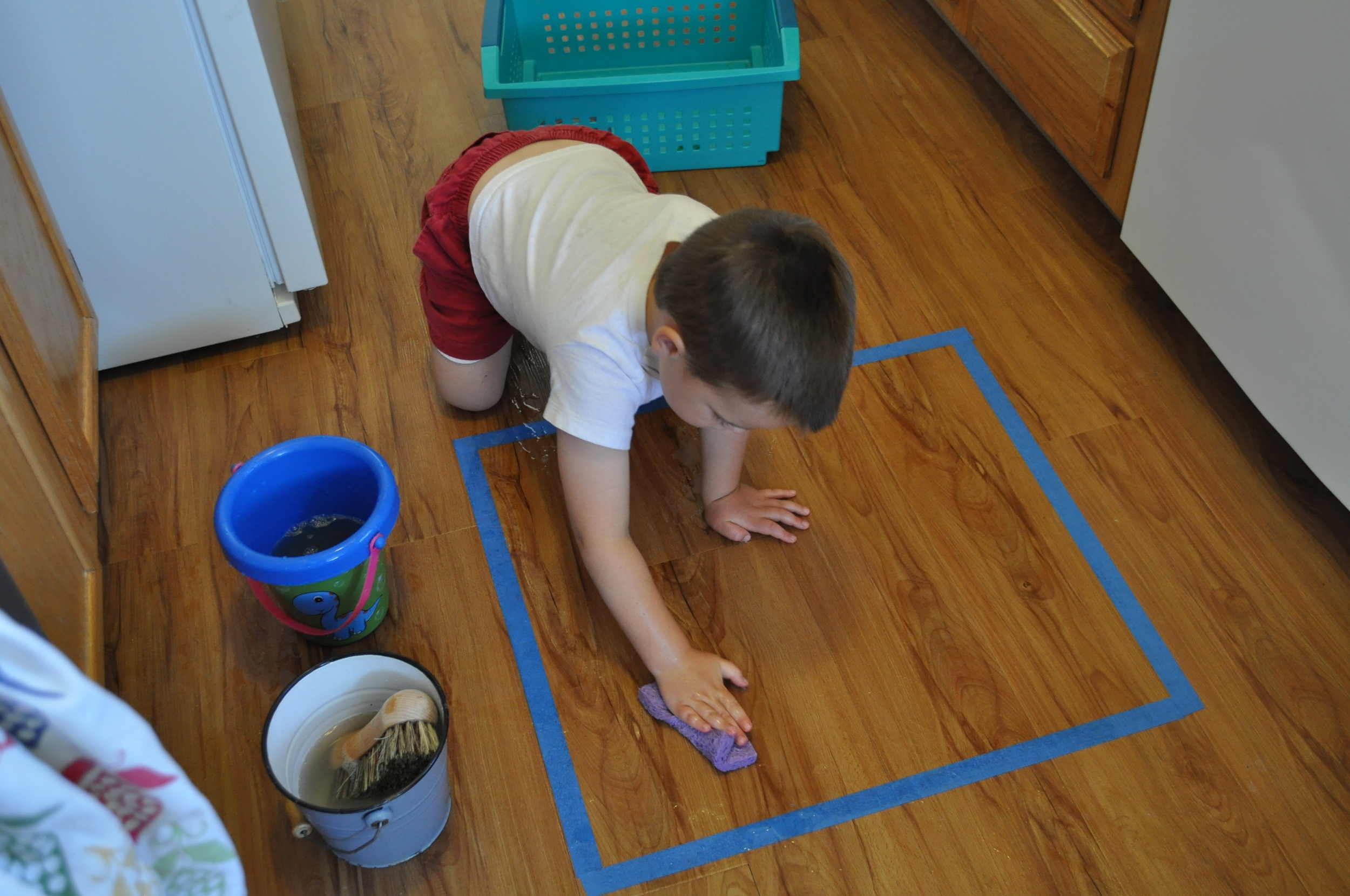The “work cycle” in a Montessori classroom is approximately three hours. My understanding is that they typically have some kind of group time, but the majority of the time the children are self-directed: choosing their own activities, concentrating and being baby geniuses. I get excited if my children will work on anything for more than 5 minutes.
Part of doing Montessori at home is missing the positive peer pressure that happens in the classroom. I’ve also missed the formal training that apparently turns one into a perfectly patient and sweet Montessori directress. So my children have a 15 minute work cycle and I correct them (and direct them) more often than I probably should and in a not-so-sweet voice.
Some reading I’ve been doing lately suggests that focusing on practical life activities helps to restore (or develop) a lack of concentration. I have been neglecting these lately since my older son turned four and I felt like I needed to push him into more math and language activities. We also do “practical life activities” everyday without really trying.
All to say that today I decided to show the children how to scrub the floor. Montessori tends to do these types of activities in a more old fashioned way, but I don’t think it’s necessary. You just need to make sure everything you use is safe for your kids. I forgot to take a before picture, but in the basket was a roll of painters tape, a pair of scissors, two buckets, a scrub brush, a bottle of dish soap and a sponge. I cut tape and made a square on the floor, had my oldest son get water in the buckets, and put a little dish soap in one of the buckets (should have done this before adding water). I showed them how to scrub with the brush and soapy water in small circles, starting at the top left and working to the right and down. Then we wiped up the soapy water with the sponge wet in clean water.
It all sounds very nice, but it resulted in a very wet floor, since unlike the baby geniuses, my children don't usually get things right after the first presentation.
 And transitioned into table scrubbing (another actual Montessori activity that I’d shown my oldest before).
And transitioned into table scrubbing (another actual Montessori activity that I’d shown my oldest before).
 This then devolved into toy truck scrubbing.
This then devolved into toy truck scrubbing.
 All of this is very good and fine and I was “following the child,” but then I ran out of all my sweet, patient, untrained Montessori-ness and decided they just needed to go outside and wash toys.
All of this is very good and fine and I was “following the child,” but then I ran out of all my sweet, patient, untrained Montessori-ness and decided they just needed to go outside and wash toys.
(I was inspired by this blog post, although I don’t recommend using baking soda unless you’re sure your floor can handle it. You also want to be sure that your child is mature enough not to sprinkle it on her head/face or inhale it or anything.)


